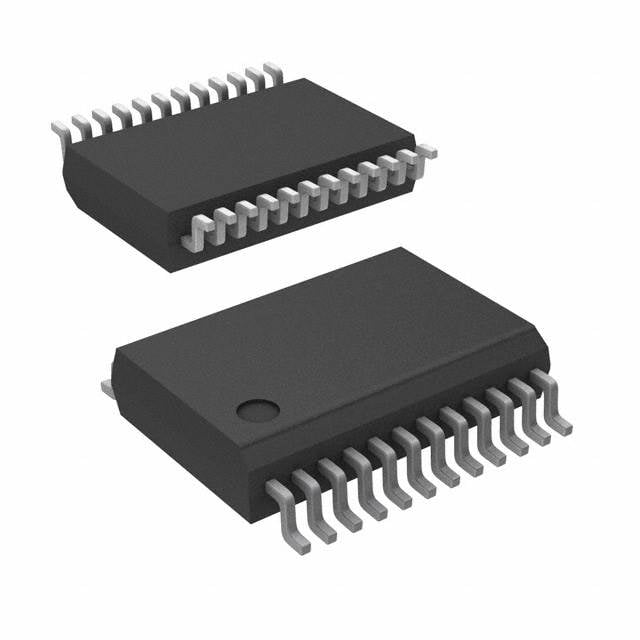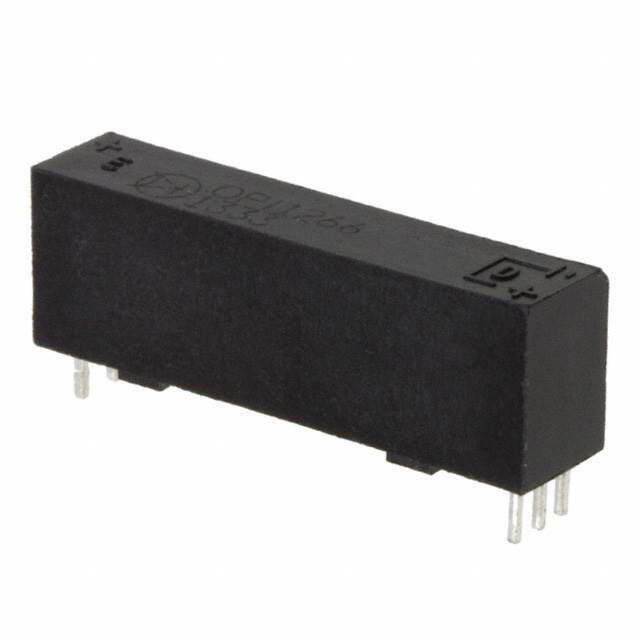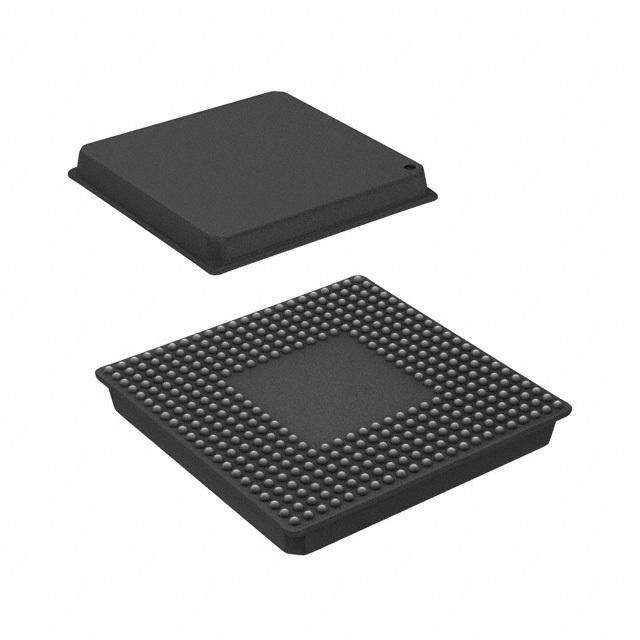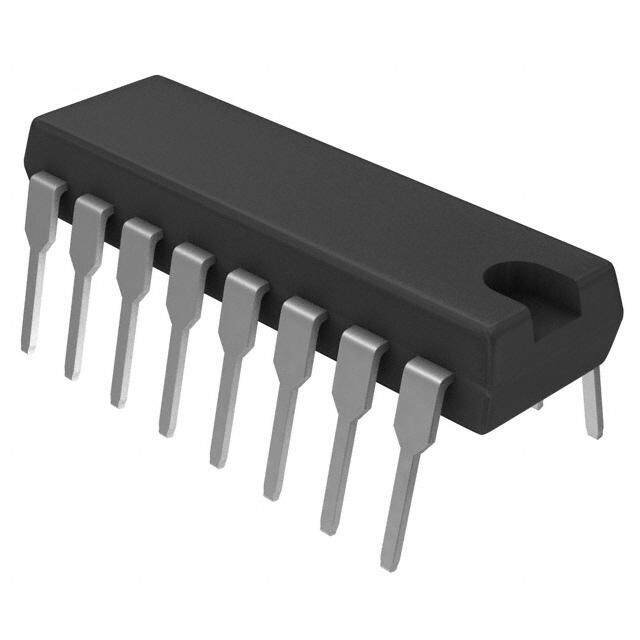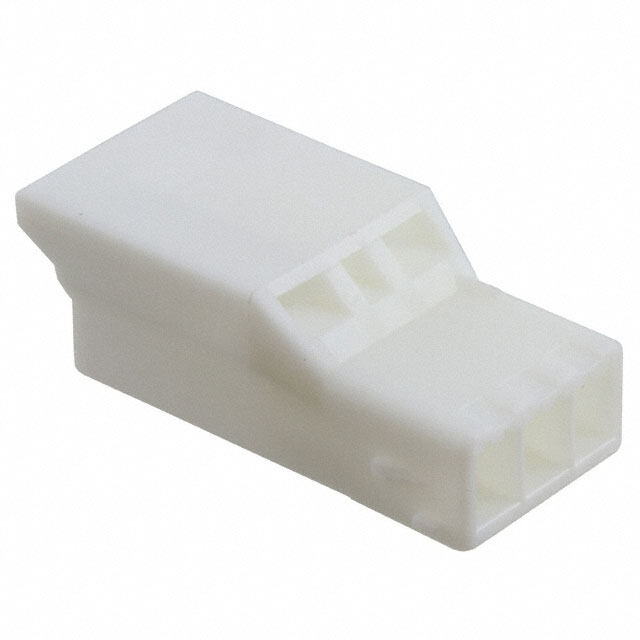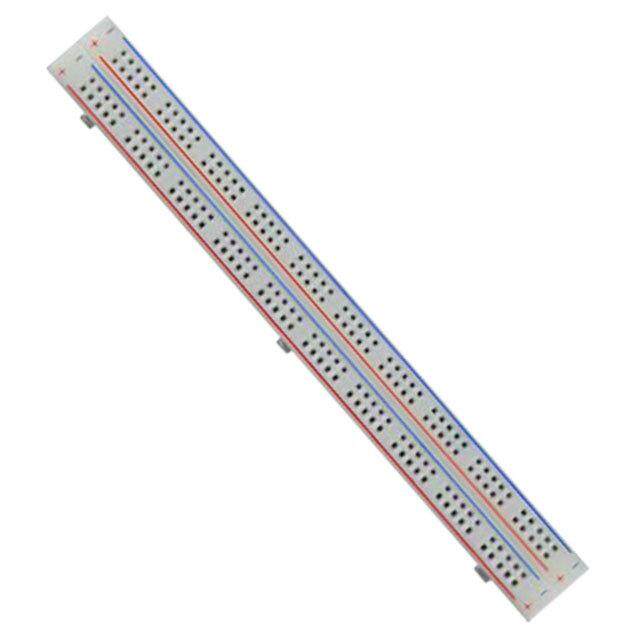ICGOO在线商城 > SP208ECA-L
- 型号: SP208ECA-L
- 制造商: Exar
- 库位|库存: xxxx|xxxx
- 要求:
| 数量阶梯 | 香港交货 | 国内含税 |
| +xxxx | $xxxx | ¥xxxx |
查看当月历史价格
查看今年历史价格
SP208ECA-L产品简介:
ICGOO电子元器件商城为您提供SP208ECA-L由Exar设计生产,在icgoo商城现货销售,并且可以通过原厂、代理商等渠道进行代购。 提供SP208ECA-L价格参考¥询价-¥询价以及ExarSP208ECA-L封装/规格参数等产品信息。 你可以下载SP208ECA-L参考资料、Datasheet数据手册功能说明书, 资料中有SP208ECA-L详细功能的应用电路图电压和使用方法及教程。
| 参数 | 数值 |
| 产品目录 | 集成电路 (IC)半导体 |
| 描述 | IC TXRX RS232 ESD LP 24SSOPRS-232接口集成电路 RS232 4Tx/4Rx temp 0C to 70C |
| 产品分类 | |
| 品牌 | Exar |
| 产品手册 | |
| 产品图片 |
|
| rohs | 符合RoHS无铅 / 符合限制有害物质指令(RoHS)规范要求 |
| 产品系列 | 接口 IC,RS-232接口集成电路,Exar SP208ECA-L- |
| 数据手册 | http://www.exar.com/Common/Content/Document.ashx?id=624 |
| 产品型号 | SP208ECA-L |
| PCN其它 | |
| 产品种类 | RS-232接口集成电路 |
| 传播延迟时间ns | 1.5 us |
| 供应商器件封装 | 24-SSOP |
| 关闭 | No |
| 其它名称 | 1016-1011-5 |
| 功能 | Transceiver |
| 包装 | 管件 |
| 协议 | RS232 |
| 双工 | 全 |
| 商标 | Exar |
| 安装类型 | 表面贴装 |
| 安装风格 | SMD/SMT |
| 封装 | Tube |
| 封装/外壳 | 24-SSOP(0.209",5.30mm 宽) |
| 封装/箱体 | SSOP-24 |
| 工作温度 | 0°C ~ 70°C |
| 工作温度范围 | 0 C to + 70 C |
| 工作电源电压 | 5 V |
| 工厂包装数量 | 58 |
| 接收器滞后 | 500mV |
| 接收机数量 | 4 Receiver |
| 数据速率 | 230 kb/s |
| 最大功率耗散 | 900 mW |
| 最大工作温度 | + 70 C |
| 最小工作温度 | 0 C |
| 标准包装 | 58 |
| 激励器数量 | 4 Driver |
| 电压-电源 | 4.5 V ~ 5.5 V |
| 电源电流 | 3 mA |
| 类型 | 收发器 |
| 输入电压 | 5 V |
| 输出电压 | 0.4 V |
| 驱动器/接收器数 | 4/4 |


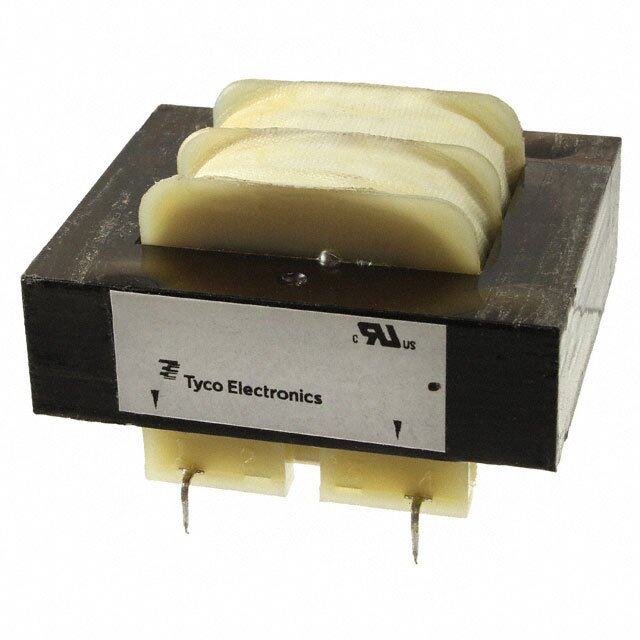
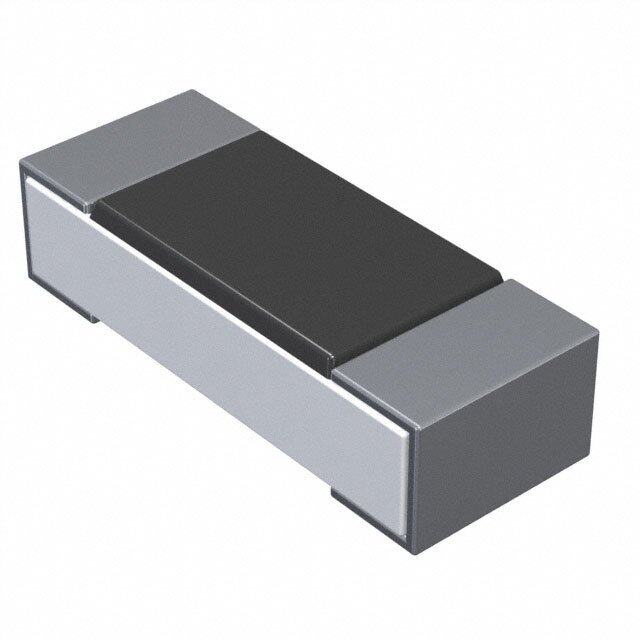
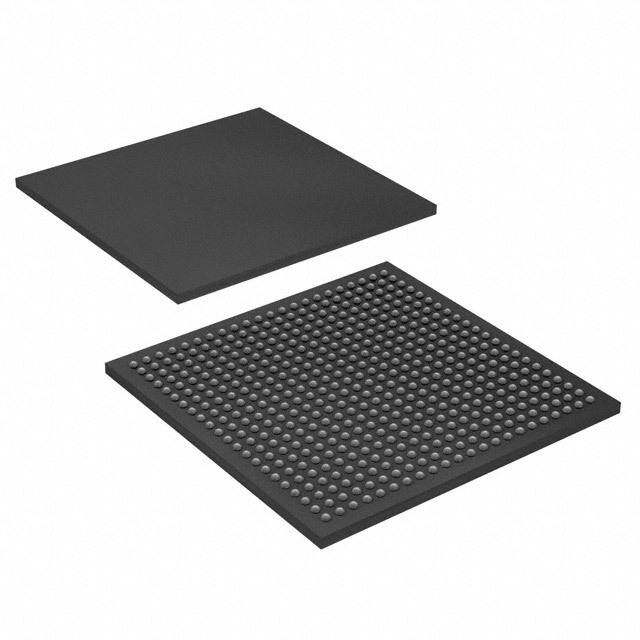
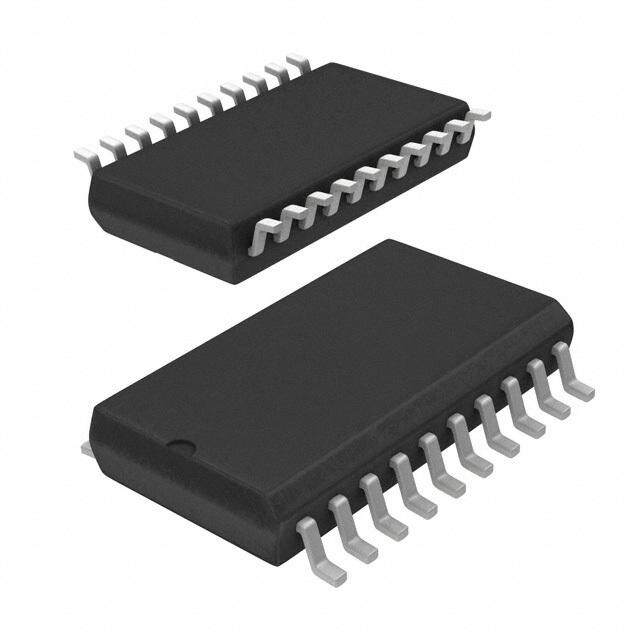
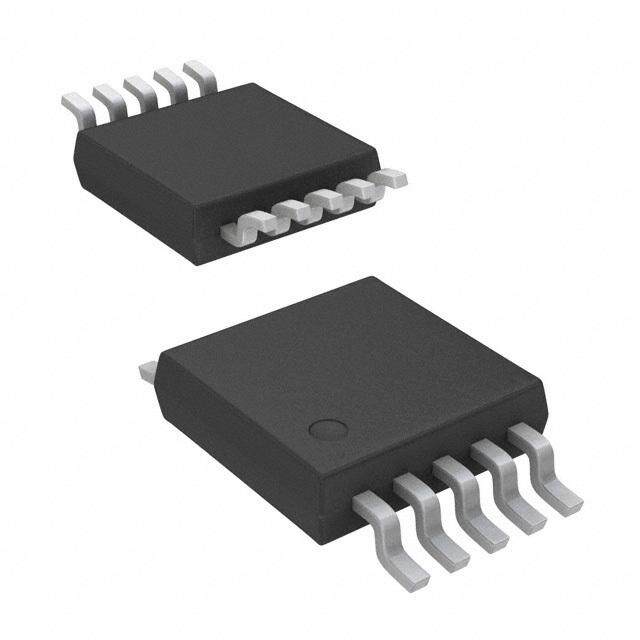

- 商务部:美国ITC正式对集成电路等产品启动337调查
- 曝三星4nm工艺存在良率问题 高通将骁龙8 Gen1或转产台积电
- 太阳诱电将投资9.5亿元在常州建新厂生产MLCC 预计2023年完工
- 英特尔发布欧洲新工厂建设计划 深化IDM 2.0 战略
- 台积电先进制程称霸业界 有大客户加持明年业绩稳了
- 达到5530亿美元!SIA预计今年全球半导体销售额将创下新高
- 英特尔拟将自动驾驶子公司Mobileye上市 估值或超500亿美元
- 三星加码芯片和SET,合并消费电子和移动部门,撤换高东真等 CEO
- 三星电子宣布重大人事变动 还合并消费电子和移动部门
- 海关总署:前11个月进口集成电路产品价值2.52万亿元 增长14.8%
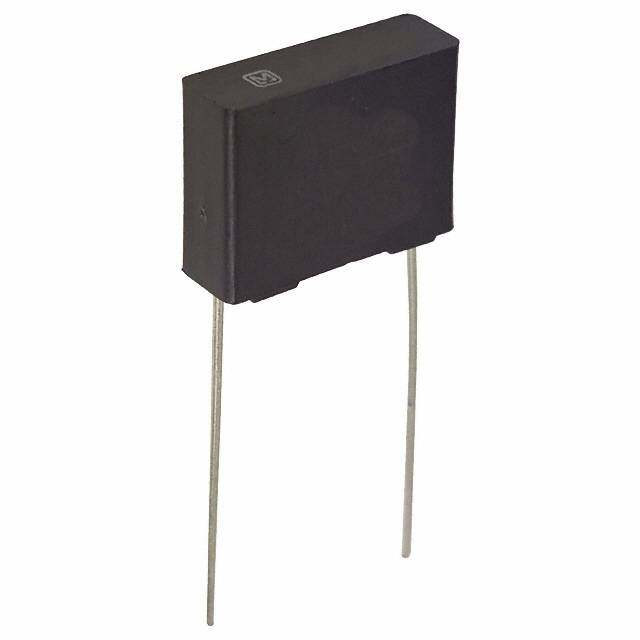


PDF Datasheet 数据手册内容提取
SP208E, SP211E, SP213E Data Sheet Low Power, High ESD +5V RS-232 Transceivers General Description Features ■ The SP208E-SP213E are enhanced transceivers intended Meets all EIA-232 and ITU V.28 specifications for use in RS-232 and V.28 serial communication. These ■ Single +5V supply operation devices feature very low power consumption and single- ■ supply operation making them ideal for space-constrained 3mA typical static supply current applications. MaxLinear on-board charge pump circuitry ■ 4 x 0.1μF external charge pump capacitors generates fully compliant RS-232 voltage levels using small ■ 120kbps transmission rates and inexpensive 0.1µF charge pump capacitors. External +12V and -12V supplies are not required. The SP211E and ■ Standard SOIC and SSOP footprints SP213E feature a low-power shutdown mode, which reduces ■ 1μA shutdown mode (SP211E & SP213E) power supply drain to 1µA. SP213E includes two receivers that remain active during shutdown to monitor for signal ■ Two wake-up receivers (SP213E) activity. ■ Tri-state / Rx enable (SP211E & SP213E) The SP208E-SP213E devices are pin-to-pin compatible with ■ Improved ESD specifications: our previous SP208, SP211 and SP213 as well as industry- ±15kV Human Body Model standard competitor devices. Driver output and receiver ±15kV IEC6100-4-2 Air Discharge input pins are protected against ESD to over ±15kV for both ±8kV IEC6100-4-2 Contact Discharge Human Body Model and IEC61000-4-2 Air Discharge test methods. Data rates of 120kbps are guaranteed, making Table 1: Model Selection Table them compatible with high speed modems and PC remote- access applications. Receivers also incorporate hysteresis Device Drivers Receivers Pins for clean reception of slow moving signals. SP208E 4 4 24 SP211E 4 5 28 Ordering Information - page19 SP213E 4 5 28 Typical Application +5V INPUT 00..11μμFF 9 0.1μF 66..33VV 0.1μF 10 C1+ VCC V+ 11 6.3V 6.3V 12 C1– 15 13 V- 0.1μF C2+ SP208E 0.1μF 16V 14 16V C2– 440000kkΩΩ TT11 IINN 5 RT11 22 TT11 OOUUTT 400kΩ TTL/CMOS INPUTS TT32 IINN 1198 440000kkΩΩ TT23 214 TT32 OOUUTT RS-232 OUTPUTS T4 IN 21 T4 20 T4 OUT R1 OUT 6 R1 7 R1 IN TTL/CMOS OUTPUTS RR23 OOUUTT 242 RR32 555kkkΩΩΩ 233 RR23 IINN RS-232 INPUTS R4 OUT 17 R4 16 R4 IN* 5kΩ 8 GND Figure 1: SP208E Typical Application • www.maxlinear.com• Rev 1.0.2
SP208E, SP211E, SP213E Low Power, High ESD +5V RS-232 Transceivers Data Sheet Revision History Revision History Document No. Release Date Change Description - 01/27/06 Legacy Sipex Datasheet. 1.0.0 07/23/09 Convert to Exar format, update ordering information and change rev to 1.0.0 1.0.1 10/15/12 Change ESD ratings to IEC61000-4-2, remove typical 230kbps data rate reference and update ordering information. 1.0.2 05/15/19 Update to MaxLinear format. Update ordering information. Removed obsolete SP207E. Added ESD rating section after absolute maximums. 5/15/19 Rev 1.0.2 ii
SP208E, SP211E, SP213E Low Power, High ESD +5V RS-232 Transceivers Data Sheet Table of Contents Table of Contents General Description.............................................................................................................................................i Features............................................................................................................................................................... i Typical Application..............................................................................................................................................i Specifications.....................................................................................................................................................1 Absolute Maximum Ratings...........................................................................................................................................1 ESD Ratings..................................................................................................................................................................1 Electrical Characteristics...............................................................................................................................................2 Pin Information...................................................................................................................................................4 Pin Configurations.........................................................................................................................................................4 Description..........................................................................................................................................................5 Theory Of Operation..................................................................................................................................................... 5 Transmitter / Drivers.............................................................................................................................................5 Receivers.............................................................................................................................................................5 Highly Efficient Charge Pump..............................................................................................................................5 Shutdown Mode...................................................................................................................................................7 SP213E Wakeup Function...................................................................................................................................7 Shutdown Conditions...........................................................................................................................................7 Receiver Enable...................................................................................................................................................8 ESD Tolerance..............................................................................................................................................................9 EIA Standards............................................................................................................................................................ 11 Typical Application Circuits.........................................................................................................................................11 Mechanical Dimensions...................................................................................................................................14 SSOP24......................................................................................................................................................................14 Mechanical Dimensions...................................................................................................................................15 WSOIC24....................................................................................................................................................................15 Mechanical Dimensions...................................................................................................................................16 SSOP28......................................................................................................................................................................16 Recommended Land Pattern and Stencil.......................................................................................................17 SSOP28......................................................................................................................................................................17 Mechanical Dimensions...................................................................................................................................18 WSOIC28....................................................................................................................................................................18 Ordering Information........................................................................................................................................19 5/15/19 Rev 1.0.2 iii
SP208E, SP211E, SP213E Low Power, High ESD +5V RS-232 Transceivers Data Sheet List of Figures List of Figures Figure 1: SP208E Typical Application...................................................................................................................i Figure 2: Transmitter Output @ 120kbps R = 3kΩ, C = 1000pF.......................................................................3 L L Figure 3: Transmitter Output @ 120kbps R = 3kΩ, C = 2500pF.......................................................................3 L L Figure 4: Transmitter Output @ 240kbps R = 3kΩ, C = 1000pF.......................................................................3 L L Figure 5: Transmitter Output @ 240kbps R = 3kΩ, C = 2500pF.......................................................................3 L L Figure 6: SP208E Pin Configuration.....................................................................................................................4 Figure 7: SP211E Pin Configuration.....................................................................................................................4 Figure 8: SP213E Pin Configuration.....................................................................................................................4 Figure 9: Charge Pump - Phase 1........................................................................................................................6 Figure 10: Charge Pump - Phase 2......................................................................................................................6 Figure 11: Charge Pump - Phase 3......................................................................................................................6 Figure 12: Charge Pump - Phase 4......................................................................................................................6 Figure 13: Typical Waveforms Seen on Capacitor C2 When all Drivers are at Maximum Load..........................7 Figure 14: Wake-Up Timing..................................................................................................................................8 Figure 15: ESD Test Circuit for Human Body Model............................................................................................9 Figure 16: ESD Test Circuit for IEC61000-4-2...................................................................................................10 Figure 17: ESD Test Waveform for IEC61000-4-2.............................................................................................10 Figure 18: Typical SP213E Application..............................................................................................................11 Figure 19: SP208E Typical Application..............................................................................................................12 Figure 20: SP211E Typical Application..............................................................................................................12 Figure 21: SP213E Typical Application..............................................................................................................13 Figure 22: Mechanical Dimension, SSOP24......................................................................................................14 Figure 23: Mechanical Dimensions, WSOIC24..................................................................................................15 Figure 24: Mechanical Dimensions, SSOP28.....................................................................................................16 Figure 25: Recommended Land Pattern and Stencil, SSOP28..........................................................................17 Figure 26: Mechanical Dimensions, WSOIC28..................................................................................................18 5/15/19 Rev 1.0.2 iv
SP208E, SP211E, SP213E Low Power, High ESD +5V RS-232 Transceivers Data Sheet List of Tables List of Tables Table 1: Model Selection Table.............................................................................................................................i Table 2: Absolute Maximum Ratings....................................................................................................................1 Table 3: ESD Ratings...........................................................................................................................................1 Table 4: Electrical Characteristics........................................................................................................................2 Table 5: Shutdown and Wake-Up Truth Tables....................................................................................................8 Table 6: Transceiver ESD Tolerance Levels......................................................................................................11 Table 7: Ordering Information.............................................................................................................................19 5/15/19 Rev 1.0.2 v
SP208E, SP211E, SP213E Low Power, High ESD +5V RS-232 Transceivers Data Sheet Specifications Specifications Absolute Maximum Ratings Important: These are stress ratings only and functional operation of the device at these or any other above those indicated in the operation sections of the specification below is not implied. Exposure to absolute maximum ratings conditions for extended periods of time may affect reliability. Table 2: Absolute Maximum Ratings Parameter Minimum Maximum Units V 6.0 V CC V+ V - 0.3 13.2 V CC V- 13.2 V Input Voltages T -0.3 V +0.3 V IN CC R ±20 V IN Output Voltages T V+, 0.3V V-, -0.3V V OUT R -0.3 V + 0.3 V OUT CC Short Circuit Duration Tout Continuous Power Dissipation per Package 24-pin SSOP (derate 11.2mW / oC above +70oC) 900 mW 24-pin SOIC (derate 12.5mW / oC above +70oC) 1000 mW 28-pin SSOP (derate 11.2mW / oC above +70oC) 900 mW 28-pin SOIC (derate 12.7mW / oC above +70oC) 1000 mW ESD Ratings Table 3: ESD Ratings Parameter Limit Units HBM (Human Body Model), Driver Outputs and Receiver Inputs ±15 kV IEC61000-4-2 Air Discharge, Driver Outputs and Receiver Inputs ±15 kV IEC61000-4-2 Contact Discharge, Driver Outputs and Receiver Inputs ±8 kV 5/15/19 Rev 1.0.2 1
SP208E, SP211E, SP213E Low Power, High ESD +5V RS-232 Transceivers Data Sheet Electrical Characteristics Electrical Characteristics V at nominal ratings; 0.1µF charge pump capacitors; T to T , unless otherwise noted. Typical values are at V = 5V and CC MIN MAX CC T = 25°C A Table 4: Electrical Characteristics Parameter Test Condition Minimum Typical Maximum Units TTL Inputs T , EN, SD IN Logic threshold VIL 0.8 V Logic threshold VIH 2.0 V Logic pull-up current T = 0V 15 200 µA IN Maximum transmission rate C = 1000pF, R = 3kΩ 120 kbps L L TTL Outputs Compatibility TTL / CMOS V I = 3.2mA, V = 5V 0.4 V OL OUT CC V I = -1.0mA 3.5 V OH OUT Leakage current 0V ≤ V ≤ V ; SP211E EN = 0V; 0.05 ±10 µA OUT CC SP213E EN = V , T = +25ºC CC A RS-232 Output All transmitter outputs loaded with Output voltage swing ±5 ±7 V 3kΩ to ground Output resistance V = 0V, V = ±2V 300 Ω CC OUT Output short circuit current Infinite Duration, V = 0V ±25 mA OUT RS-232 Input Voltage range -15 15 V Voltage threshold low V = 5V, T = 25°C 0.8 1.2 V CC A Voltage threshold high V = 5V, T = 25°C 1.7 2.8 V CC A Hysteresis V = 5V 0.2 0.5 1.0 V CC Resistance V = ±15V, T = 25°C 3 5 7 kΩ IN A Dynamic Characteristics Driver propagation delay TTL to RS-232 1.5 µs Receiver propagation delay RS-232 to TTL 0.5 1.5 µs Instantaneous slew rate C = 50pF, R = 3 - 7kΩ, T = 25°C, 30 V/µs L L A from ±3V Transition time C = 2500pF, R = 3kΩ, measured 1.5 µs L L from -3V to +3V or +3V to -3V Output enable time 400 ns Output disable time 250 ns Power Requirements V 4.50 5.00 5.50 V CC I No load: V = ±10%, T = 25°C 3 6 mA CC CC A I All transmitters R = 3kΩ 15 mA CC L Shutdown current T = 25°C 1 10 µA A 5/15/19 Rev 1.0.2 2
SP208E, SP211E, SP213E Low Power, High ESD +5V RS-232 Transceivers Data Sheet Electrical Characteristics Table 4: Electrical Characteristics Parameter Test Condition Minimum Typical Maximum Units Environmental and Mechanical Commercial, _C 0 +70 ºC Operating Temperature Extended, _E -40 +85 ºC Storage temperature -65 +125 ºC _A Shrink (SSOP) small outline Package _T Wide (SOIC) small outline Figure 3: Transmitter Output @ 120kbps Figure 2: Transmitter Output @ 120kbps RL = 3kΩ, CL = 1000pF RL = 3kΩ, CL = 2500pF Figure 4: Transmitter Output @ 240kbps Figure 5: Transmitter Output @ 240kbps RL = 3kΩ, CL = 1000pF RL = 3kΩ, CL = 2500pF 5/15/19 Rev 1.0.2 3
SP208E, SP211E, SP213E Low Power, High ESD +5V RS-232 Transceivers Data Sheet Pin Information Pin Information Pin Configurations S P 2 0 8 E Figure 3: SP208E Pin Configuration S P 2 1 1 E Figure 4: SP211E Pin Configuration S P 2 1 3 E Figure 5: SP213E Pin Configuration 5/15/19 Rev 1.0.2 4
SP208E, SP211E, SP213E Low Power, High ESD +5V RS-232 Transceivers Data Sheet Description Description The SP208E, SP211E and SP213E multi–channel 30V / µs in order to meet the EIA / RS-232 and ITU V.28 transceivers fit most RS-232 / V.28 communication needs. standards. The transition of the output from high to low All of these devices feature low–power CMOS construction also meets the monotonicity requirements of the standard, and MaxLinear on-board charge pump circuitry to generate even when loaded. Driver output voltage swing is ±7V RS-232 signal-voltages, making them ideal for applications (typical) with no load, and ±5V or greater at maximum load. where +9V and -9V supplies are not available. The highly The transmitter outputs are protected against infinite short- efficient charge pump is optimized to use small and circuits to ground without degradation in reliability. inexpensive 0.1µF charge pump capacitors, saving board The drivers of the SP211E, and SP213E can be tri-stated space and reducing overall circuit cost. by using the SHUTDOWN function. In this “power-off” Each device provides a different driver / receiver state, the charge pump is turned off and V current drops CC combination to match standard application requirements. to 1µA typical. Driver output impedance will remain greater SP208E is a 4-driver/4-receiver device, ideal for providing than 300Ω, satisfying the RS-232 and V.28 specifications. handshaking signals in V.35 applications or other general- For SP211E, SHUTDOWN is active when pin 25 is driven purpose serial communications. The SP211E and SP213E high. For SP213E, SHUTDOWN is active when pin 25 is are each 3-driver, 5-receiver devices ideal for DTE serial driven low. ports on a PC or other data-terminal equipment. The SP211E and SP213E feature a low–power shutdown Receivers mode, which reduces power supply drain to 1µA. The SP213E includes a Wake-Up function which keeps two The receivers convert RS-232 level input signals to receivers active in the shutdown mode, unless disabled by inverted TTL level signals. Because signals are often the EN pin. received from a transmission line where long cables and The family is available in 28 and 24 pin SO (wide) and system interference can degrade signal quality, the inputs SSOP (shrink) small outline packages. Devices can be have enhanced sensitivity to detect weakened signals. specified for commercial (0˚C to +70˚C) and industrial/ The receivers also feature a typical hysteresis margin of extended (–40˚C to +85˚C) operating temperatures. 500mV for clean reception of slowly transitioning signals in noisy conditions. These enhancements ensure that the receiver is virtually immune to noisy transmission lines. Theory Of Operation Receiver input thresholds are between 1.2 to 1.7 volts typical. This allows the receiver to detect standard TTL or MaxLinear RS-232 transceivers contain three basic circuit CMOS logic-level signals as well as RS-232 signals. If a blocks: receiver input is left unconnected or un-driven, a 5kΩ ■ Transmitter / driver pulldown resistor to ground will commit the receiver to a logic-1 output state. ■ Receiver ■ Charge pump Highly Efficient Charge Pump SP211E and SP213E also include SHUTDOWN and The onboard dual-output charge pump is used to generate ENABLE functions. positive and negative signal voltages for the RS-232 drivers. This enables fully compliant RS-232 and V.28 Transmitter / Drivers signals from a single power supply device. The charge pumps use four external capacitors to hold and The drivers are single-ended inverting transmitters, which transfer electrical charge. The MaxLinear design uses a accept either TTL or CMOS inputs and output the RS-232 unique approach compared to older, less–efficient designs. signals with an inverted sense relative to the input logic The pumps use a four–phase voltage shifting technique to levels. Should the input of the driver be left open, an attain symmetrical V+ and V- power supplies. An intelligent internal pullup to V forces the input high, thus committing CC control oscillator regulates the operation of the charge the output to a logic-1 (MARK) state. The slew rate of the pump to maintain the proper voltages at maximum transmitter output is internally limited to a maximum of efficiency. 5/15/19 Rev 1.0.2 5
SP208E, SP211E, SP213E Low Power, High ESD +5V RS-232 Transceivers Data Sheet Theory Of Operation Phase 1 - V Charge Store and Double SS VCC = +5V The positive terminals of capacitors C and C are charged 1 2 from V with their negative terminals initially connected to CC +5V C4 ground. C1+ is then connected to ground and the stored + + + – VDD Storage Capacitor charge from C1- is superimposed onto C2-. Since C2+ is C1– C2– – + VSS Storage Capacitor still connected to V the voltage potential across C is CC 2 –5V –5V C3 now 2 x V . CC Figure 8: Charge Pump - Phase 3 VCC = +5V Phase 4 - V Transfer DD +5V C4 + + + – VDD Storage Capacitor The fourth phase connects the negative terminal of C2 to C1– C2– – + VSS Storage Capacitor ground and the positive terminal of C2 to the VDD storage capacitor. This transfers the doubled (V+) voltage onto C . –5V –5V C3 4 Meanwhile, capacitor C is charged from V to prepare it 1 CC for its next phase. Figure 6: Charge Pump - Phase 1 VCC = +5V Phase 2 - V Transfer and Invert SS Phase two connects the negative terminal of C2 to the VSS +7V C4 storage capacitor and the positive terminal of C2 to ground. + + + – VDD Storage Capacitor This transfers the doubled and inverted (V-) voltage onto C1– C2– – + VSS Storage Capacitor C . Meanwhile, capacitor C is charged from V to 3 1 CC C3 prepare it for its next phase. VCC = +5V Figure 9: Charge Pump - Phase 4 The MaxLinear charge-pump generates V+ and V- C4 independently from V . Hence in a no–load condition V+ CC + + + – VDD Storage Capacitor and V- will be symmetrical. Older charge pump C1– C2– – + VSS Storage Capacitor approaches generate V+ and then use part of that stored -7V C3 charge to generate V-. Because of inherent losses, the magnitude of V- will be smaller than V+ on these older designs. Figure 7: Charge Pump - Phase 2 Under lightly loaded conditions the intelligent pump oscillator maximizes efficiency by running only as needed Phase 3 - V Charge Store and Double DD to maintain V+ and V-. Since interface transceivers often Phase three is identical to the first phase. The positive spend much of their time at idle, this power-efficient terminals of C and C are charged from V with their innovation can greatly reduce total power consumption. 1 2 CC negative terminals initially connected to ground. C + is then This improvement is made possible by the independent 1 connected to ground and the stored charge from C - is phase sequence of the MaxLinear charge-pump design. 1 superimposed onto C2-. Since C2+ is still connected to VCC The clock rate for the charge pump typically operates at the voltage potential across capacitor C is now 2 x V . greater than 15kHz, allowing the pump to run efficiently 2 CC with small 0.1µF capacitors. Efficient operation depends on rapidly charging and discharging C and C , therefore 1 2 capacitors should be mounted close to the IC and have low ESR (equivalent series resistance). Low cost surface mount ceramic capacitors (such as are widely used for 5/15/19 Rev 1.0.2 6
SP208E, SP211E, SP213E Low Power, High ESD +5V RS-232 Transceivers Data Sheet Theory Of Operation power-supply decoupling) are ideal for use on the charge SP213E Wakeup Function pump. On the SP213E, shutdown will tri-state receivers 1 - 3. However the charge pumps are designed to be able to Receivers 4 and 5 remain active to provide a “wake-up” function properly with a wide range of capacitor styles and function and may be used to monitor handshaking and values. If polarized capacitors are used, the positive and control inputs for activity. With only two receivers active negative terminals should be connected as shown. during shutdown, the SP213E draws only 5 - 10µA of Voltage potential across any of the capacitors will never supply current. exceed 2 x V . Therefore capacitors with working CC Many standard UART devices may be configured to voltages as low as 10V rating may be used with a nominal generate an interrupt signal based on changes to the Ring V supply. C will never see a potential greater than CC 1 Indicate (RI) or other inputs. A typical application of this VCC, so a working voltage of 6.3V is adequate. The function would be to detect modem activity with the reference terminal of the V capacitor may be connected computer in a power–down mode. The ring indicator signal DD either to V or ground, but if connected to ground a from the modem could be passed through an active CC receiver in the SP213E that is itself in the shutdown mode. minimum 16V working voltage is required. Higher working The ring indicator signal would propagate through the voltages and / or capacitance values may be advised if SP213E to the power management circuitry of the operating at higher V or to provide greater stability as the CC computer to power up the microprocessor and the SP213E capacitors age. drivers. After the supply voltage to the SP213E reaches +5.0V, the SHUTDOWN pin can be disabled, taking the SP213E out of the shutdown mode. +7V All receivers that are active during shutdown maintain 500mV (typ.) of hysteresis. All receivers on the SP213E a) C+ may be put into tri-state using the ENABLE pin. 2 GND GND Shutdown Conditions b) C2– For complete shutdown to occur and the 10µA power drain to be realized, the following conditions must be met: –7V SP211E: ■ +5V must be applied to the SD pin Figure 10: Typical Waveforms Seen on Capacitor C2 When all Drivers are at Maximum Load ■ ENABLE must be either Ground, +5.0V or not connected Shutdown Mode ■ The transmitter inputs must be either +5.0V or not connected SP211E and SP213E feature a control input which will shut ■ V must be +5V CC down the device and reduce the power supply current to less than 10µA, making the parts ideal for battery-powered ■ Receiver inputs must be >0V and <+5V systems. In shutdown mode the transmitters will be tri- SP213E: stated, the V+ output of the charge pump will discharge to VCC and the V- output will discharge to ground. Shutdown ■ 0V must be applied to the SD pin will tri-state all receiver outputs of the SP211E. ■ ENABLE must be either 0V, +5.0V or not connected ■ The transmitter inputs must be either +5.0V or not connected ■ V must be +5V CC ■ Receiver inputs must be >0V and <+5V 5/15/19 Rev 1.0.2 7
SP208E, SP211E, SP213E Low Power, High ESD +5V RS-232 Transceivers Data Sheet Theory Of Operation Receiver Enable Table 5: Shutdown and Wake-Up Truth Tables SP211E and SP213E feature an enable input, which allows SP211E the receiver outputs to be either tri–stated or enabled. This SD EN# Drivers Receivers can be especially useful when the receiver is tied directly to 0 1 Active Tri-state a shared microprocessor data bus. For the SP211E, 0 0 Active Active enable is active low; that is, 0V applied to the ENABLE pin will enable the receiver outputs. For the SP213E, enable is 1 1 Off Tri-state active high; that is, +5V applied to the ENABLE pin will 1 0 Off Tri-state enable the receiver outputs. SP213E SD# EN Drivers RX 1-3 RX 4-5 0 1 Off Tri-state Active 0 0 Off Tri-state Tri-state 1 1 Active Active Active 1 0 Active Tri-state Tri-state POWER UP WITH SD ACTIVE (Charge pump in shutdown mode) t 0 (POWERUP) +5V R DATA VALID OUT 0V t WAIT ENABLE SD DISABLE POWER UP WITH SD DISABLED (Charge pump in active mode) t 0 (POWERUP) +5V R DATA VALID OUT 0V t ENABLE ENABLE SD DISABLE EXERCISING WAKE–UP FEATURE t 0 (POWERUP) +5V R DATA VALID DATA VALID DATA VALID OUT 0V t t t ENABLE ENABLE ENABLE SD DISABLE ENABLE DISABLE t WAIT V = +5V –10%; T = 25C CC A t = 2ms typical, 3ms maximum WAIT t = 1ms typical, 2ms maximum ENABLE Figure 11: Wake-Up Timing 5/15/19 Rev 1.0.2 8
SP208E, SP211E, SP213E Low Power, High ESD +5V RS-232 Transceivers Data Sheet ESD Tolerance ESD Tolerance The SP208E, SP211E and SP213E devices incorporate The Human Body Model has been the generally accepted ruggedized ESD cells on all driver output and receiver input ESD testing method for semiconductors. This method is pins. The ESD structure is improved over our previous also specified in MIL-STD-883, Method 3015.7 for ESD family for more rugged applications and environments testing. The premise of this ESD test is to simulate the sensitive to electro-static discharges and associated human body's potential to store electro-static energy and transients. The improved ESD tolerance is at least ±15kV discharge it to an integrated circuit. The simulation is without damage nor latch-up. performed by using a test model as shown in Figure 12. This method will test the IC's capability to withstand an There are different methods of ESD testing applied: ESD transient during normal handling such as in a) MIL-STD-883, Method 3015.7 manufacturing areas where the IC's tend to be handled frequently. b) IEC61000-4-2 Air Discharge c) IEC61000-4-2 Direct Contact R R C S SW1 SW2 Device DC Power CS Under Source Test Figure 12: ESD Test Circuit for Human Body Model The IEC-61000-4-2, formerly IEC801-2, is generally used cable onto the rear of the system only to find an unpleasant for testing ESD on equipment and systems. System zap just before the person touches the back panel. The manufacturers must guarantee a certain amount of ESD high energy potential on the person discharges through an protection since the system itself is exposed to the outside arcing path to the rear panel of the system before he or she environment and human presence. The premise with even touches the system. This energy, whether discharged IEC61000-4-2 is that the system is required to withstand an directly or through air, is predominantly a function of the amount of static electricity when ESD is applied to points discharge current rather than the discharge voltage. and surfaces of the equipment that are accessible to Variables with an air discharge such as approach speed of personnel during normal usage. The transceiver IC the object carrying the ESD potential to the system and receives most of the ESD current when the ESD source is humidity will tend to change the discharge current. For applied to the connector pins. The test circuit for example, the rise time of the discharge current varies with IEC61000-4-2 is shown on Figure 13. There are two the approach speed. methods within IEC61000-4-2, the Air Discharge method The Contact Discharge Method applies the ESD current and the Contact Discharge method. directly to the EUT. This method was devised to reduce the With the Air Discharge Method, an ESD voltage is applied unpredictability of the ESD arc. The discharge current rise to the equipment under test (EUT) through air. This time is constant since the energy is directly transferred simulates an electrically charged person ready to connect a without the air-gap arc. 5/15/19 Rev 1.0.2 9
SP208E, SP211E, SP213E Low Power, High ESD +5V RS-232 Transceivers Data Sheet ESD Tolerance In situations such as hand held systems, the ESD charge For the Human Body Model, the current limiting resistor can be directly discharged to the equipment from a person (R ) and the source capacitor (C ) are 1.5kΩ and 100pF, S S already holding the equipment. The current is transferred respectively. For IEC61000-4-2, the current limiting on to the keypad or the serial port of the equipment directly resistor (R ) and the source capacitor (C ) are 330Ω and S S and then travels through the PCB and finally to the IC. 150pF, respectively. The circuit model in Figure 12 and Figure 13 represent the The higher C value and lower R value in the S S typical ESD testing circuit used for all three methods. The IEC61000-4-2 model are more stringent than the Human C is initially charged with the DC power supply when the S Body Model. The larger storage capacitor injects a higher first switch (SW1) is on. voltage to the test point when SW2 is switched on. The Now that the capacitor is charged, the second switch lower current limiting resistor increases the current charge (SW2) is on while SW1 switches off. The voltage stored in onto the test point. the capacitor is then applied through R , the current S The larger storage capacitor injects a higher voltage to the limiting resistor, onto the device under test (DUT). In ESD test point when SW2 is switched on. The lower current tests, the SW2 switch is pulsed so that the device under limiting resistor increases the current charge onto the test test receives a duration of voltage. point. Contact-Discharge Model RC RS RV SW1 SW2 Device DC Power CS Under Source Test RS andRV add up to 330Ωfor IEC1000-4-2. Figure 13: ESD Test Circuit for IEC61000-4-2 30A 15A 0A t=0ns t=30ns t Figure 14: ESD Test Waveform for IEC61000-4-2 5/15/19 Rev 1.0.2 10
SP208E, SP211E, SP213E Low Power, High ESD +5V RS-232 Transceivers Data Sheet EIA Standards The RS-232 is a relatively slow data exchange protocol, EIA Standards with a maximum baud rate of only 20kbps, which can be transmitted over a maximum copper wire cable length of 50 The Electronic Industry Association (EIA) developed feet. The SP208E, SP211E and SP213E data several standards of data transmission which are revised communications interface products have been designed to and updated in order to meet the requirements of the meet both the EIA protocol standards, and the needs of the industry. In data processing, there are two basic means of industry. communicating between systems and components. The RS-232 standard was first introduced in 1962 and, since Table 6: Transceiver ESD Tolerance Levels that time, has become an industry standard. Human IEC61000-4-2 Device Pin Tested BMooddye l ADiirs charge DCiornectat ct Level Driver Outputs ±15kV ±15kV ±8kV 4 Receiver Inputs ±15kV ±15kV ±8kV 4 Typical Application Circuits +5V 11 12 V Typical EIA-232 C + CC 1 Application: C - V+ 14 1 13 SP213E, UART & 15 C + V- DB-9 Connector 2 17 C - 16 2 8 9 DCD 1 16C550 22 23 DSR UART 6 Rx 26 27 2 DCD RTS 7 DSR 7 2 3 Tx SI 8 6 3 RTS CTS 4 SO 5 4 DTR 9 CTS 5 RI 20 1 DTR RI 19 18 CS NC 21 28 NC SG CS SHUTDOWN 25 V or CS * EN CC 24 GND Figure 15: Typical SP213E Application 5/15/19 Rev 1.0.2 11
SP208E, SP211E, SP213E Low Power, High ESD +5V RS-232 Transceivers Data Sheet Typical Application Circuits +5V INPUT +5V INPUT 00..11μμFF 11 0.1μF 00..11μμFF 9 0.1μF 66..33VV 12 C1+ VCC 13 6.3V 66..33VV 06..13μVF 111023 CC11+– VCC VV+- 1151 6.3V 006..1.13μμVFF 1145 CC21+– SP211E VV+- 17 0.1μF 0.1μF C2+ SP208E 0.1μF 16V 16 C2– 16V 16V 14 16V C2– 440000kkΩΩ 7 22 440000kkΩΩ TT11 IINN RT11 TT11 OOUUTT TTL/CMOS INPUTS TTTT1132 II NNIINN 11598 444000000kkkΩΩΩ RTTT1123 22124 TTTT1132 OO OOUUUUTTTT RS-232 OUTPUTS TTL/CMOS INPUTS TTT432 IIINNN 22610 444000000kkkΩΩΩ TTT423 2138 TTT432 OOOUUUTTT RS-232 OUTPUTS 21 20 T4 IN T4 T4 OUT R1 OUT 8 R1 9 R1 IN 5kΩ R1 OUT 6 R1 7 R1 IN TS R2 OUT 5 R2 4 R2 IN L/CMOS OUTPUTS RR23 OOUUTT 242 RR32 55kkΩΩ 233 RR23 IINN RS-232 INPUTS TTL/CMOS OUTPU RR34 OOUUTT 2262 RR34 55kkΩΩ 2273 RR34 IINN RS-232 INPUTS TT 5kΩ 5kΩ R4 OUT 17 R4 16 R4 IN* R5 OUT 1294 R5 18 R5 IN EN 5kΩ 5kΩ 25 SD 8 GND 10 GND Figure 16: SP208E Typical Application Figure 17: SP211E Typical Application 5/15/19 Rev 1.0.2 12
SP208E, SP211E, SP213E Low Power, High ESD +5V RS-232 Transceivers Data Sheet Typical Application Circuits +5V INPUT 00..11μμFF 11 0.1μF 66..33VV 12 C1+ VCC 13 6.3V 0.1μF V+ 6.3V 14 C1– 17 15 V- 0.1μF C2+ SP213E 0.1μF 16V 16 16V C2– 440000kkΩΩ 7 22 TT11 IINN RT11 TT11 OOUUTT 400kΩ NPUTS T2 IN 6 T2 3 T2 OUT TPUTS OS I 400kΩ OU TTL/CM T3 IN 20 400kΩ T3 1 T3 OUT RS-232 21 28 T4 IN T4 T4 OUT 8 9 R1 OUT R1 R1 IN 5kΩ 5 4 TS R2 OUT R2 R2 IN TPU 5kΩ UTS TTL/CMOS OU RR34 OOUUTT 2262 RR34 5kΩ 2273 RR34 IINN* RS-232 INP 5kΩ 19 18 R5 OUT R5 R5 IN* 24 EN 5kΩ 25 SD * Receivers active during shutdown 10 GND Figure 18: SP213E Typical Application 5/15/19 Rev 1.0.2 13
SP208E, SP211E, SP213E Low Power, High ESD +5V RS-232 Transceivers Data Sheet Mechanical Dimensions Mechanical Dimensions SSOP24 BOTTOM VIEW TOP VIEW SIDE VIEW - 1 (cid:169) (cid:169) SIDE VIEW - 2 TERMINAL DETAILS Drawing No.: POD-00000148 Revision: A Figure 19: Mechanical Dimension, SSOP24 5/15/19 Rev 1.0.2 14
SP208E, SP211E, SP213E Low Power, High ESD +5V RS-232 Transceivers Data Sheet Mechanical Dimensions Mechanical Dimensions WSOIC24 TOPVIEW FRONT(cid:3)VIEW SIDE(cid:3)VIEW TERMINALDETAILS 1.All(cid:3)dimensioins(cid:3)are(cid:3)in(cid:3)Millimeters 2.Dimensions(cid:3)and(cid:3)tolerance(cid:3)per(cid:3)Jedec(cid:3)MS(cid:882)013(cid:3)AD Drawing No. : POD - 00000122 Revision: A Figure 20: Mechanical Dimensions, WSOIC24 5/15/19 Rev 1.0.2 15
SP208E, SP211E, SP213E Low Power, High ESD +5V RS-232 Transceivers Data Sheet Mechanical Dimensions Mechanical Dimensions SSOP28 TOP VIEW SIDE VIEW 1 SIDE VIEW 2 DETAIL A TERMINAL DETAILS Drawing No.: POD-000000133 Revision: A Figure 21: Mechanical Dimensions, SSOP28 5/15/19 Rev 1.0.2 16
SP208E, SP211E, SP213E Data Sheet Recommended Land Pattern and Stencil Recommended Land Pattern and Stencil SSOP28 TYPICAL RECOMMENDED LAND PATTERN TYPICAL RECOMMENDED STENCIL Drawing No.: POD-000000133 Revision: A Figure 22: Recommended Land Pattern and Stencil, SSOP28 5/15/19 Rev 1.0.2 17
SP208E, SP211E, SP213E Low Power, High ESD +5V RS-232 Transceivers Data Sheet Mechanical Dimensions Mechanical Dimensions WSOIC28 Top View Side View Front View Drawing No: POD-00000106 Revision: B Figure 23: Mechanical Dimensions, WSOIC28 5/15/19 Rev 1.0.2 18
SP208E, SP211E, SP213E Low Power, High ESD +5V RS-232 Transceivers Data Sheet Ordering Information Ordering Information Table 7: Ordering Information(1) Ordering Part Number Drivers Receivers Operating Temperature Range Package Lead-Free Packaging Method SP208ECA-L/TR 4 4 0°C to 70°C SSOP24 SP208EEA-L/TR 4 4 -40°C to 85°C SP208EET-L/TR 4 4 WSOIC24 Reel SP211ECA-L/TR 4 5 SSOP28 0°C to 70°C Yes(2) SP211ECT-L/TR 4 5 WSOIC28 SP211EEA-L/TR 4 5 -40°C to 85°C SP213ECA-L 4 5(3) 0°C to 70°C SSOP28 Tube SP213EEA-L/TR 4 5(3) -40°C to 85°C Reel 1.Refer to www.maxlinear.com/SP208E, www.maxlinear.com/SP211E, and www.maxlinear.com/SP213E for most up-to-date Ordering Information. 2.Visit www.maxlinear.com for additional information on Environmental Rating. 3.With 2 active receivers in shutdown. 5/15/19 Rev 1.0.2 19
SP208E, SP211E, SP213E Low Power, High ESD +5V RS-232 Transceivers Data Sheet Disclaimer MaxLinear, Inc. 5966 La Place Court, Suite 100 Carlsbad, CA 92008 760.692.0711 p. 760.444.8598 f. www.maxlinear.com The content of this document is furnished for informational use only, is subject to change without notice, and should not be construed as a commitment by MaxLinear, Inc. MaxLinear, Inc. assumes no responsibility or liability for any errors or inaccuracies that may appear in the informational content contained in this guide. Complying with all applicable copyright laws is the responsibility of the user. Without limiting the rights under copyright, no part of this document may be reproduced into, stored in, or introduced into a retrieval system, or transmitted in any form or by any means (electronic, mechanical, photocopying, recording, or otherwise), or for any purpose, without the express written permission of MaxLinear, Inc. Maxlinear, Inc. does not recommend the use of any of its products in life support applications where the failure or malfunction of the product can reasonably be expected to cause failure of the life support system or to significantly affect its safety or effectiveness. Products are not authorized for use in such applications unless MaxLinear, Inc. receives, in writing, assurances to its satisfaction that: (a) the risk of injury or damage has been minimized; (b) the user assumes all such risks; (c) potential liability of MaxLinear, Inc. is adequately protected under the circumstances. MaxLinear, Inc. may have patents, patent applications, trademarks, copyrights, or other intellectual property rights covering subject matter in this document. Except as expressly provided in any written license agreement from MaxLinear, Inc., the furnishing of this document does not give you any license to these patents, trademarks, copyrights, or other intellectual property. MaxLinear, the MaxLinear logo, and any MaxLinear trademarks, MxL, Full-Spectrum Capture, FSC, G.now, AirPHY and the MaxLinear logo are all on the products sold, are all trademarks of MaxLinear, Inc. or one of MaxLinear’s subsidiaries in the U.S.A. and other countries. All rights reserved. Other company trademarks and product names appearing herein are the property of their respective owners. © 2019 MaxLinear, Inc. All rights reserved.
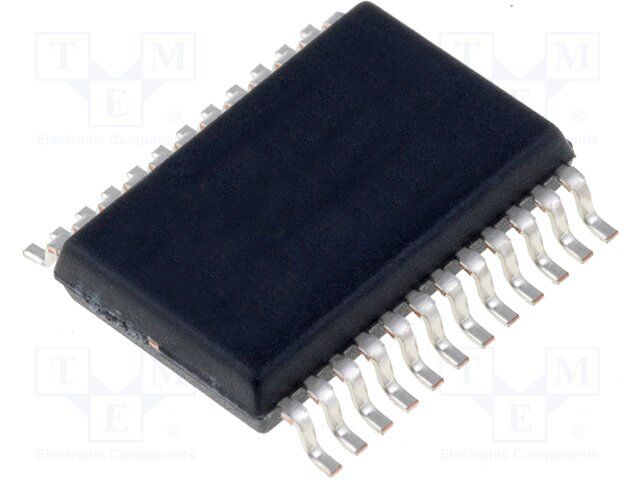
 Datasheet下载
Datasheet下载
